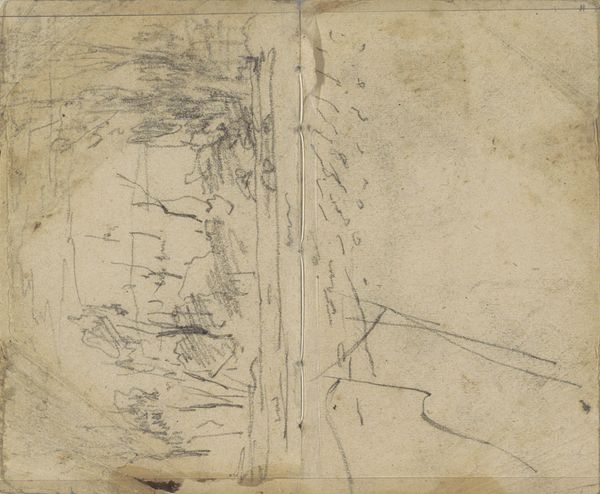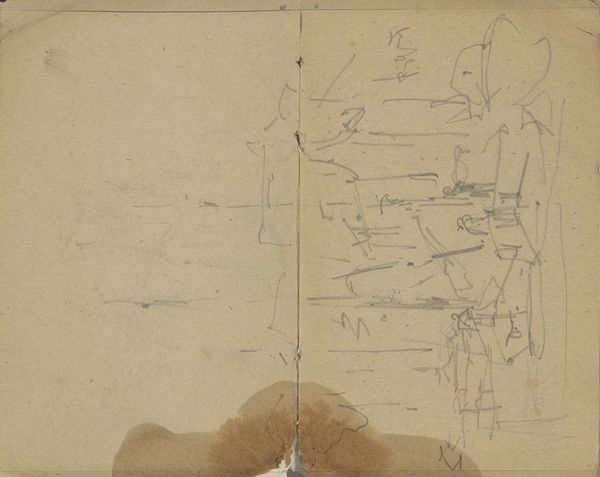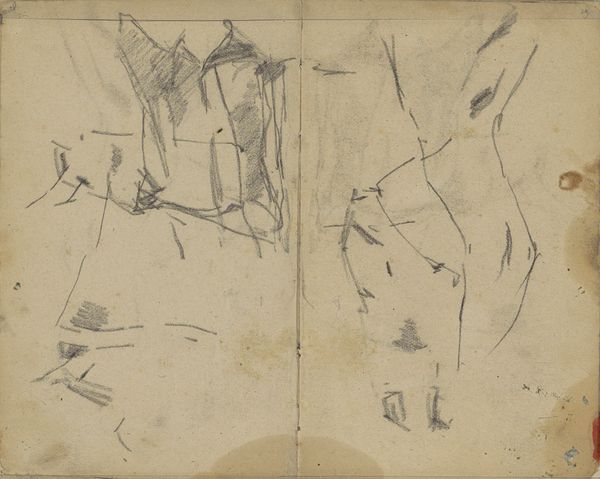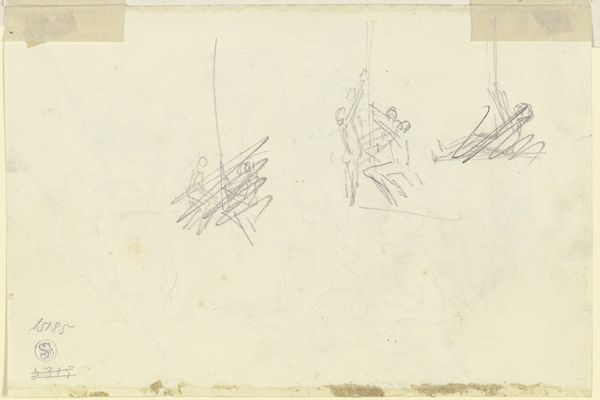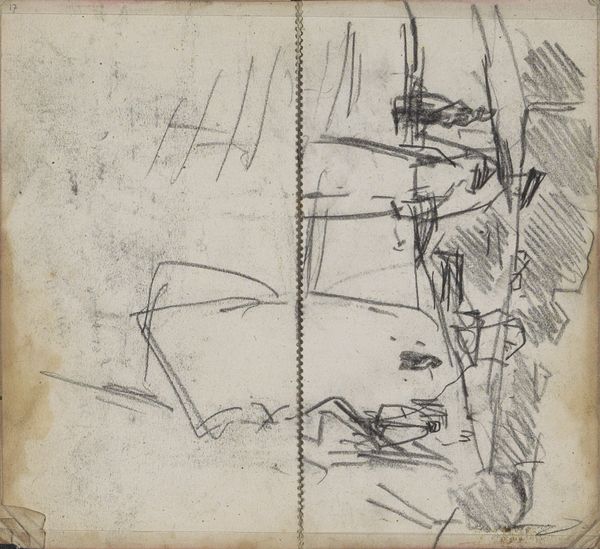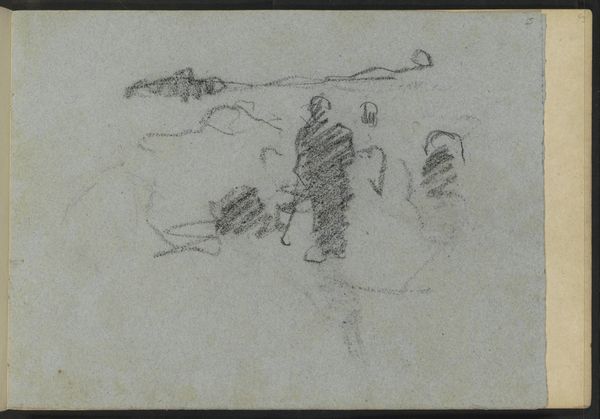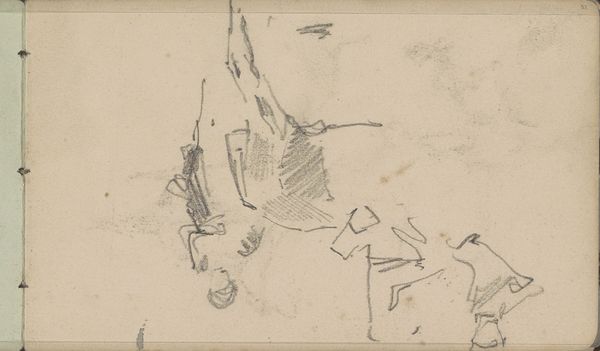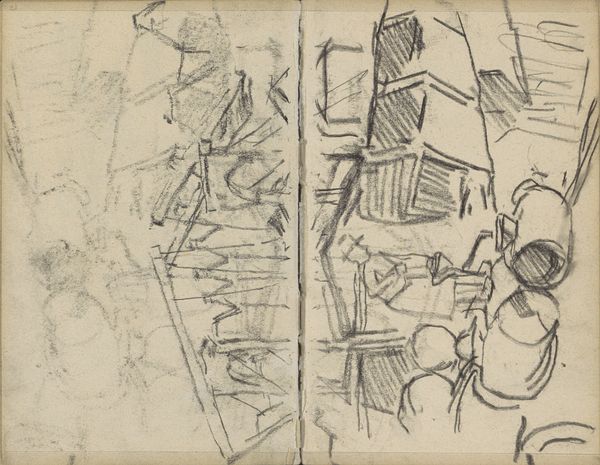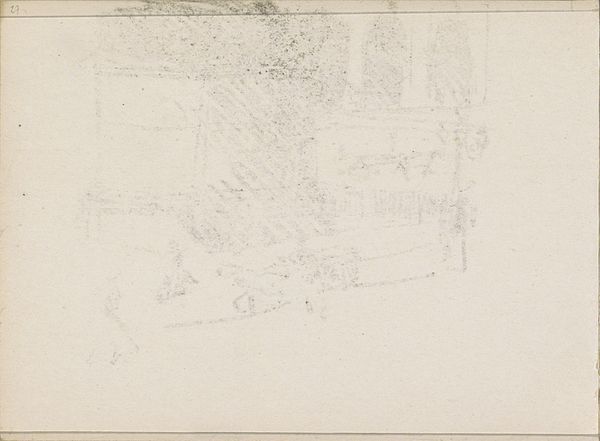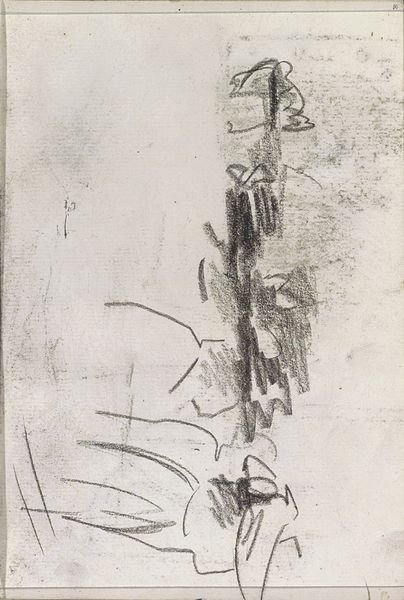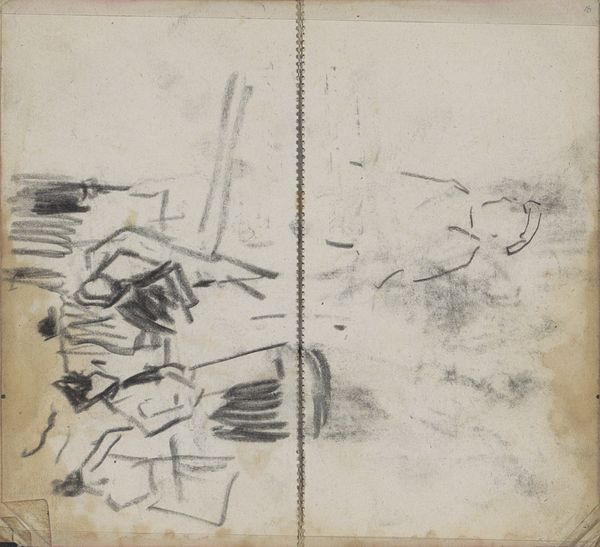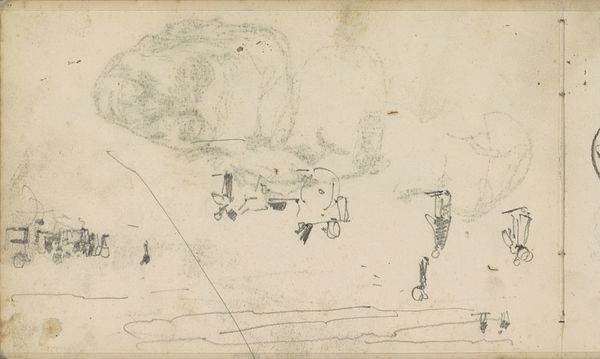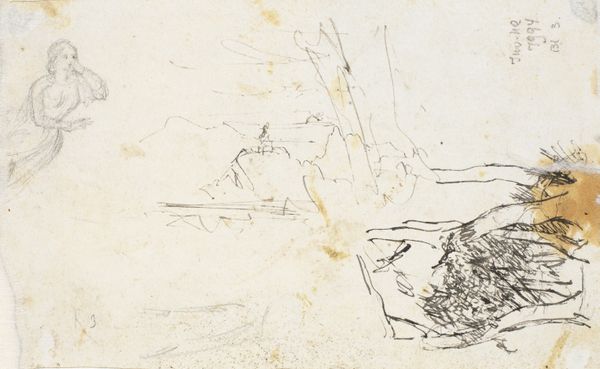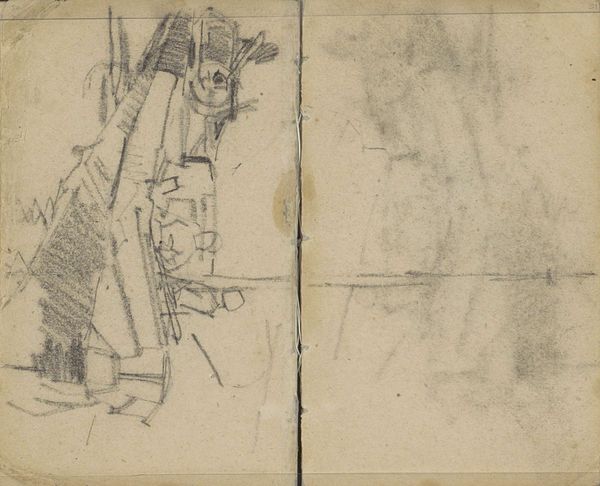
drawing, pencil
#
drawing
#
figuration
#
pencil
#
line
Copyright: Rijks Museum: Open Domain
Editor: This is "Ruiter," or "Horseman," a pencil drawing made by George Hendrik Breitner sometime between 1881 and 1883. It's a sketch, almost fragmented, but I am intrigued by the contrast of loose lines against sections of shading. What can you tell me about it? Curator: The rough handling of the pencil is particularly important. Notice how Breitner quickly renders the horse and rider, prioritizing speed and efficiency over traditional artistic skill. It's less about capturing likeness and more about the sheer act of mark-making, the labor involved. How does this inform our understanding of 'art' versus mere utility? Editor: That's interesting! I usually associate finished detail with greater artistry, so you're saying the value comes from seeing the process? Curator: Precisely! The value shifts from the subject depicted to the very act of its depiction. We can see how Breitner engaged with readily available materials. The humble pencil and paper become tools for social observation. Editor: What observations do you think he was trying to capture? Curator: Breitner was interested in the rapidly changing urban landscape of Amsterdam. Perhaps the "horseman" represents the traditional means of transport. It gives way to industrial ones of an emerging industrialized society and his drawing process itself echoes this shift; mass producible pencils replace artisanal craftsmanship, rapid sketches supersede lengthy oil painting. What boundaries of labor, materiality, and production does this piece question for you? Editor: I never thought of it like that before! Seeing it as a study of the means of artistic production really reframes the work and adds depth. Thank you! Curator: It highlights how the creation of even a simple drawing intersects with wider societal changes, like industrialization and labour itself!
Comments
No comments
Be the first to comment and join the conversation on the ultimate creative platform.
